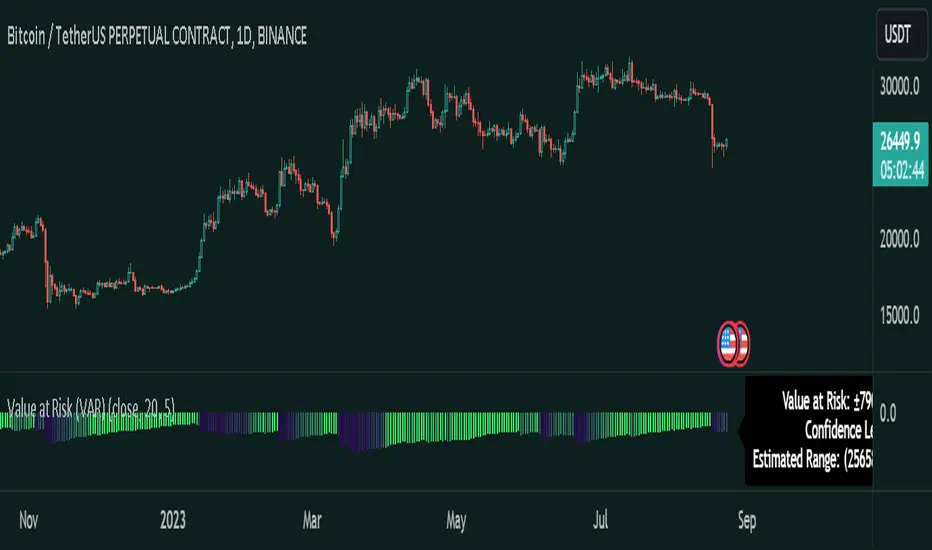Value at Risk (VAR)

For instance, lets say there is a VAR of $1000000 at the 95% confidence level in a daily time horizon period, that means that there is a 5% chance that the portfolio will decrease by more than a million within a single day.
Indicator Overview
This indicator calculates the Value at Risk (VAR) using the Variance - Covariance method. On the settings of the indicator you can also determine what significance level you want for the indicator.
Confidence level = 1 - α
α is the significance level.
Basically a 5% significance level will have a 95% Confidence level.
There is also a information tab that displays the Value at Risk (VAR), the Confidence level of the significant level you selected, and an Estimated Range. This is just an estimated range because this is based on returns which follow a normal distributions, unlike price which follows a log normal distribution. So this range will only be obeyed here and then.
Calculation method: Variance - Covariance Method
This method involves the expected return and the standard deviation (volatility). It is based on the assumption that returns follow a normal distribution. For more information on this calculation check this link out.
https://www.investopedia.com/articles/04/092904.asp
Applications:
- If the calculated Value at Risk (VAR) is high then, that means the risk is high and if the trader has a low risk tolerance then the trader might want to reconsider the trade.
- The indicator also lets you see what the potential losses (Long and Short) of the asset can be with the confidence level of your choice.
Invite-only script
Only users approved by the author can access this script. You'll need to request and get permission to use it. This is typically granted after payment. For more details, follow the author's instructions below or contact Traders_Endeavors directly.
TradingView does NOT recommend paying for or using a script unless you fully trust its author and understand how it works. You may also find free, open-source alternatives in our community scripts.
Author's instructions
Access our indicators: patreon.com/user?u=80987417
Disclaimer
Invite-only script
Only users approved by the author can access this script. You'll need to request and get permission to use it. This is typically granted after payment. For more details, follow the author's instructions below or contact Traders_Endeavors directly.
TradingView does NOT recommend paying for or using a script unless you fully trust its author and understand how it works. You may also find free, open-source alternatives in our community scripts.
Author's instructions
Access our indicators: patreon.com/user?u=80987417